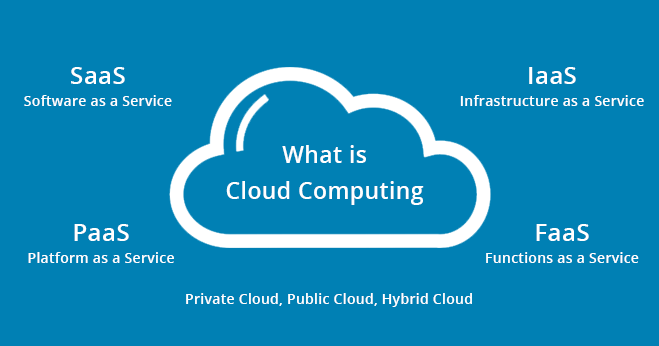Cloud Computing Service
In the ever-evolving landscape of technology, cloud computing services have emerged as a transformative force, reshaping the way individuals and businesses approach data storage, processing, and application deployment. This article explores the evolution, key features, and the profound impact of cloud computing services on various sectors.
Evolution of Cloud Computing Services
The roots of cloud computing dates back to the 1960s when the idea of “utility computing” was introduced. However, it wasn’t until the 2000s that cloud computing services gained significant traction. Companies like Amazon, Google, and Microsoft played pivotal roles in popularizing the concept by offering scalable and flexible computing resources over the internet.
Initially, cloud services primarily focused on providing infrastructure, known as Infrastructure as a Service (IaaS). This included virtualized computing resources, storage, and networking. Over time, the cloud evolved to offer Platform as a Service (PaaS), providing a comprehensive environment for application development and deployment. Finally, Software as a Service (SaaS) emerged, enabling users to access applications directly through the web without the need for installation.
Key Features of Cloud Computing Services:
1. On-Demand Self-Service:
Cloud computing services offer on-demand resources, allowing users to provision and manage computing resources as needed. This flexibility empowers businesses to scale their operations seamlessly.
2. Broad Network Access:
Cloud services are accessible over the internet from a variety of devices, providing ubiquitous access. This accessibility facilitates collaboration and remote work, a particularly crucial aspect in the modern business landscape.
3. Resource Pooling:
Cloud providers pool computing resources to serve multiple customers. This multi-tenancy model enables efficient resource utilization and cost-sharing, making cloud services economically attractive.
4. Rapid Elasticity:
Cloud resources can be rapidly scaled up or down based on demand. This elasticity ensures that businesses can adapt to changing workloads without significant upfront investment in infrastructure.
5. Measured Service:
Cloud computing services operate on a pay-as-you-go model. Users are billed based on their actual usage of resources, providing cost efficiency and transparency.
Impact on Businesses:
1. Cost Efficiency:
Cloud computing eliminates the need for organizations to invest heavily in physical infrastructure. With a pay-as-you-go model, businesses can optimize costs and only pay for the resources they consume.
2. Scalability and Flexibility:
The ability to scale resources up or down based on demand allows businesses to be agile and responsive. This scalability is particularly beneficial for startups and enterprises alike.
3. Global Collaboration:
Cloud services enable seamless collaboration among geographically dispersed teams. Shared access to applications and data promotes real-time collaboration, fostering innovation and efficiency.
4. Enhanced Security Measures:
Leading cloud providers implement robust security measures, often exceeding what individual organizations can achieve. This results in improved data protection and cybersecurity, a critical concern in today’s digital landscape.
5. Innovation Acceleration:
Cloud computing facilitates rapid prototyping and experimentation, fostering innovation. Developers can quickly test and deploy applications without the constraints of traditional infrastructure.
Use Cases of Cloud Computing Services:
1. Data Storage and Backup:
Cloud storage services like Amazon S3, Google Cloud Storage, and Microsoft Azure Blob Storage provide secure and scalable solutions for data storage and backup, reducing the reliance on physical hardware.
2. Web Hosting:
Cloud platforms such as AWS, Azure, and Google Cloud offer robust web hosting services. Websites and applications hosted in the cloud benefit from high availability, scalability, and enhanced performance.
3. Big Data Analytics:
Cloud computing is instrumental in handling vast amounts of data for analytics purposes. Services like Amazon Redshift and Google BigQuery provide scalable solutions for processing and analyzing big data.
4. Artificial Intelligence and Machine Learning:
Cloud providers offer AI and machine learning services that empower organizations to build and deploy advanced models without the need for extensive expertise. This accelerates the integration of AI into various applications.
5. Software Development and Testing:
Cloud-based development platforms, such as AWS CodeStar and Microsoft Azure DevOps, streamline the software development lifecycle. Developers can collaborate efficiently and automate testing processes.
Challenges and Future Trends:
While cloud computing services have revolutionized the IT landscape, challenges exist, including concerns about data privacy, security, and potential vendor lock-in. As technology advances, future trends in cloud computing may include the increased adoption of serverless computing, edge computing to reduce latency, and the integration of quantum computing into cloud services.
In conclusion, cloud computing services have become integral to modern business operations, offering unprecedented scalability, flexibility, and cost efficiency. As businesses continue to embrace digital transformation, the role of cloud computing is poised to expand, driving innovation across various industries and shaping the future of technology.




Comments
0 comments